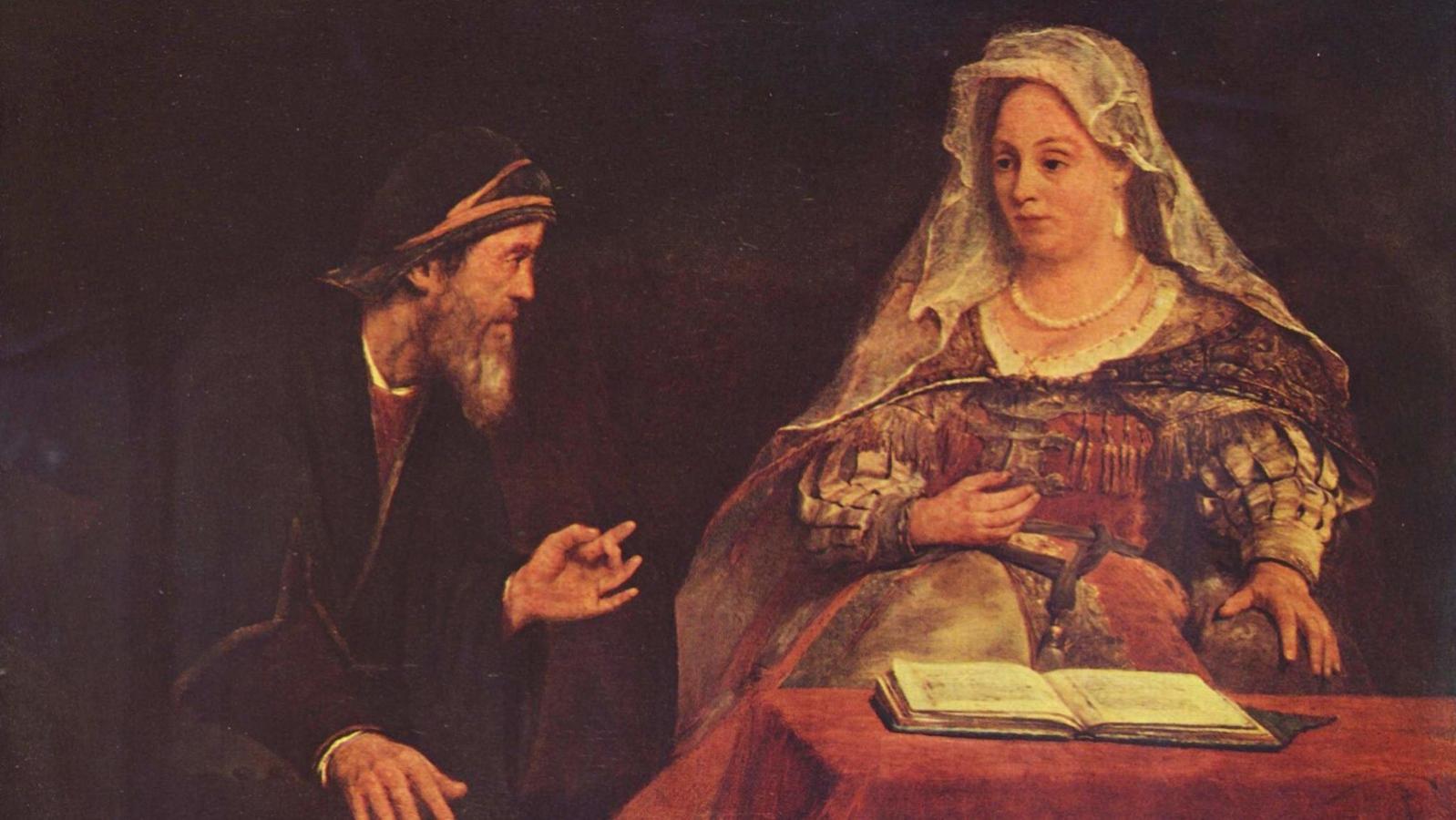Today, Purim is a quintessential Jewish holiday. To every little boy and girl who masquerades on Purim, Mordecai and Esther are arch-heroes of Jewishness. But a good case can be made that Mordecai and Esther, too, may have been quite integrated in Persian life and that Purim is the holiday brought to you by assimilated Jews.
What kind of Jews were Mordecai and Esther? Obviously, the answer has to be a speculation, and their record of saving the Jews speaks for itself. Still…
First, there is the matter of their names. Esther’s name probably is derived from Ishtar, a Babylonian goddess, and Mordecai’s name from Marduk, a Babylonian god. Equivalent names today might well be Mary and Christopher. Of course, committed Jews in open societies also adopted Gentile names. My parents, Orthodox Jews, wanted an Anglo-Saxon name for their little son, Yitzchak–so they named me Irving. But Christopher!
Then there is that Miss Persia contest. Esther was entered into a competition to become queen by marrying a Gentile king. Imagine that the president of the United States gets divorced and there is a nationwide beauty contest whose prize is marriage to the president. What kind of Jewish women would enter? Not likely Hasidic girls or graduates of Stern College [the women’s college of Yeshiva University].
The Megillah tells us that, at Mordecai’s instruction, Esther did not reveal her people or her origins while she lived at the king’s court. What did she eat? Did she go to the mikvah [ritual bath]? The Rabbis of the Talmud recognized the problem, and while some claim Esther had secret arrangements to keep Shabbat and kashrut, others conclude that she did not act very Jewishly.
It is also interesting that neither Mordecai nor Esther had any family, at least as far as the Megillah reveals. (A midrash suggests that they were married to each other, but that is another story.) One of the “crazy” reversals of the Purim story is that the Jewish characters seem to be living alone while the Haman types had the strong family ties.
Adaptation was the key to a Jew’s ability to rise, and often it was the price of admission. Thus, the “court Jews” (to whom the community turned, over the later course of Jewish history, to intercede with the ruling powers when Jews were in trouble) were typically half-Gentile in their ways of living. When Mordecai asked Esther to plead with the king, she vacillated at first–just the reaction one would expect from a marginal Jew who was reluctant to lose her place in society.
Mordecai did stand up to Haman, but his refusal to bow does not make him a traditional Jew. “Non-Jewish Jews” such as Spinoza, Freud, and Marx used their outsider status as a source of creative insight to become critics of the Establishment. It is equally plausible that–like Leon Blum of France and Benjamin Disraeli of England, whose marginal Jewishness led them to work for a new political order–Mordecai also opposed Haman’s emerging tyranny. When the resentment he generated focused not on the issues but on the Jews, the anti-Semitism-induced “shock of recognition” followed. At that point there was one of three choices: to be craven and yield, to ignore the Jewish issue, or to accept one’s Jewishness as a decisive fact and take up Jewish cause and fate.
Mordecai and, after some initial hesitation, Esther responded not only by defending their principles but by reaching out to all Jews and rallying the community to self-defense and self-affirmation. They saved the Jewish people and wrote a glorious page in Jewish history. Perhaps it is no accident that the Purim holiday they and the folk fashioned is offbeat. These “born-again” Jews contributed a vital new element to the total Jewish religion and celebration.
The above analysis is deliberately provocative, even overstated. On balance, the evidence points to Mordecai’s and Esther’s being devoted Jews; usually it takes that type to risk their lives to save their people. The rabbinic tradition very strongly insists that they were observant Jews. Note that when Esther was in trouble, she asked the Jews to fast and pray. Esther’s Jewish name is Hadassah; she possibly lived in two worlds, with the name Esther on her diploma and the family calling her Hadassah at home.
Still, even if Mordecai and Esther weren’t assimilated, many of their friends and allies in the war against Haman were, as the Rabbis indeed set forth.
The point of this exercise is to underscore one of the deep lessons of Purim: Never write off assimilated Jews. They come out of the historical closet in the greatest crises and when they are least expected.
Reprinted with permission of the author from The Jewish Way: Living the Holidays.
Hasidic
Pronounced: khah-SID-ik, Origin: Hebrew, a stream within ultra-Orthodox Judaism that grew out of an 18th-century mystical revival movement.
Purim
Pronounced: PUR-im, the Feast of Lots, Origin: Hebrew, a joyous holiday that recounts the saving of the Jews from a threatened massacre during the Persian period.
Shabbat
Pronounced: shuh-BAHT or shah-BAHT, Origin: Hebrew, the Sabbath, from sundown Friday to sundown Saturday.
Talmud
Pronounced: TALL-mud, Origin: Hebrew, the set of teachings and commentaries on the Torah that form the basis for Jewish law. Comprised of the Mishnah and the Gemara, it contains the opinions of thousands of rabbis from different periods in Jewish history.



